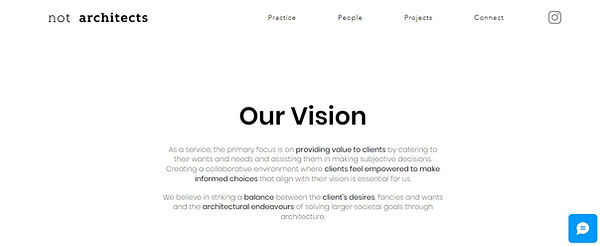

Common as well as multiple individual discussions formed the basis for arriving at architectural positions. Discussions focused on making explicit connections to previous exercises, and self-reflections of the past 4/5 years of education. Each student brought a ‘dream’ project to the table; the dream implying that the project lent itself to easily manifest the position concerns. A few individual discussions on why the project was a dream helped finalize the project. The second project was a client project where the tutor roleplayed the client. This project was a general physician’s clinic and small nursing home in Ghatlodia in Ahmedabad. The students interviewed the client and had intermediate client meetings for approval. Students discussed the relevance of the design process to the position, and the similarities and differences in individual project approach with the tutor; the tutor did not discuss the architectural quality of projects in isolation.
The final output was a website of the practice showcasing not only the projects but also the ideology and concerns
“We believe in the power of creating experiential spaces. We believe that functional and contextual spaces are the foundation for creating memorable experiences, and we use a variety of methods, including reconsidering the anthropometrics, structural experimentation, and resource selection, to achieve this goal.”
- Studio Essence | Anushka Poddar
“The architect is a facilitator who helps people who can’t afford an architect. They enables the less priveleged to reach their goals more quickly and with less effort. The architect settle on site and tries to develop a deep understanding of the community in order to work with them, not for them from end to end.”
- Mathilde Grillon
“The ideology of the architecture firm ‘One to Hundred’ centres around the relationship between the individual and the collective. They approach design challenges with a precise and adaptable philosophy, seeking to create architecture that can impact a larger user base and catalyze positive change in society.”
- One to Hundred | Mehlam Makda
“Buildings impact the environment more than any other human activity, using about 48% of the total energy consumed. The studio aims to design passive low energy buildings to significantly reduce energy consumption and the carbon footprint through the life of the building. Along with being energy and cost efficient, the buildings also respond to the local climate and result in a more comfortable indoor environment for occupants.”
- Passive Paradigm Studio | Radhika Bhakkar
“We aim to create socially conscious architecture.
With this approach to design, one prioritizes the social impact of design solutions rather than the product. The aim is to create designs that address social issues, promote equity, and improve the quality of life for individuals and communities.”
- Studio Scattershot | Suyashi Paliwal
Architect as a service provider, responding to user’s needs and solving problems.
The priority is given to wants and needs of the Clients/Users over the wills and fancies of the architect.
Each project has x i.e., needs and wants of the clients and users & y larger idea catering to larger audience.
- Not Architects | Varshil Changani, Ved Patel (and Yajurva Jagad)
“Specialises in brownfield projects.
Believes small changes can transform (the experience of) the building itself.
An architecture that is only servile and functional (and not evocative) is an architecture that has failed.”
- Studio plug.in | Swarnavalli N.

“Specialises in brownfield projects.
Believes small changes can transform (the experience of) the building itself.
An architecture that is only servile and functional (and not evocative) is an architecture that has failed.”
- Studio plug.in













